
6 late-flowring spring perennials
to avoid being caught out by spring frost
Contents
Every year or almost, it’s the same thing! We’ve barely come out of winter: a warm spell is felt. The first shoots of the perennials then start to show their leaves. And then bang! Here come the negative temperatures again, ruining any hope of flowering for some plants. To avoid this, there is a solution: plant perennials that start growing later in spring. Thus, you would really have to be unlucky to be surprised by frost again. In this advice sheet, you will find our little selection of perennials that “wake up” between the end of April and May.
Japanese anemones
Japanese anemones are perennials that bloom from late summer to the heart of autumn. They come in a variety of colours: with white flowers, in a multitude of shades of pink, and even some with double flowers.
Japanese anemones are not caught off guard in spring, as they restart their growth late, around May. Consider planting spring bulbs to brighten the ground before the anemones take over.
Japanese anemones spread and sucker in light, cool soils until they form beautiful colonies.
→ Discover our selection of Japanese Anemones in our online nursery.
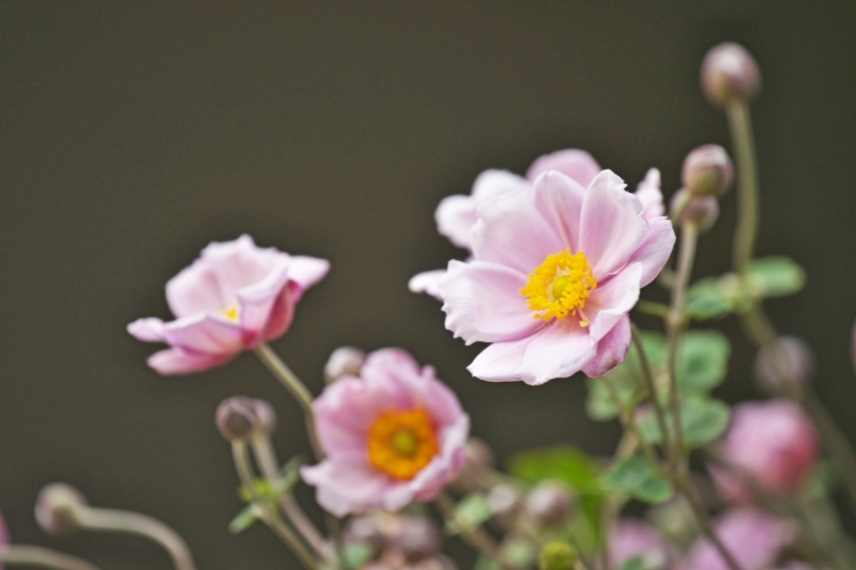
Japanese anemone hupehensis
Astrantias
True botanical gems, Astrantias (or Astrantia in Latin) are perennials that bloom with stunning small umbels of flowers surrounded by colourful bracts in shades of pink, green, white, or red depending on the variety.
New foliage develops between April and May (beware of slugs that are fond of it!) for flowering from June and sometimes until September, as some varieties allow for repeat flowering.
Astrantias are hardy groundcover perennials that only fear drought. Reserve a spot for them in partial shade in rich, cool soil.
→ All Astrantias are stunning, and there are countless varieties; find them here.

Astrantia major
Discover other Perennials
View all →Available in 1 sizes
Available in 0 sizes
Available in 1 sizes
Available in 1 sizes
Available in 1 sizes
Available in 2 sizes
Available in 1 sizes
Available in 1 sizes
Available in 1 sizes
Available in 1 sizes
Delphiniums
Also known as Larkspur or Dolphin Flower, delphiniums are impressive perennials whose flowers attract butterflies. Giants with feet of clay, delphiniums develop long flower spikes that can sometimes reach nearly 2 metres, which should be protected from the wind and staked. The ramified or dense spikes come in pure blue, purple, white, yellow, pink, or red, depending on the variety.
Slow to establish, these spectacular perennials often take one to three years before truly settling in. Afterwards, by late spring (May), they produce a beautiful clump of dozens of flower spikes that will bloom generously at the end of summer.
Larkspur thrives in rich, deep, and permeable soil, in a sunny position and sheltered from the wind.
→ Delphiniums do not only bloom in blue; discover dozens of varieties in our online nursery.
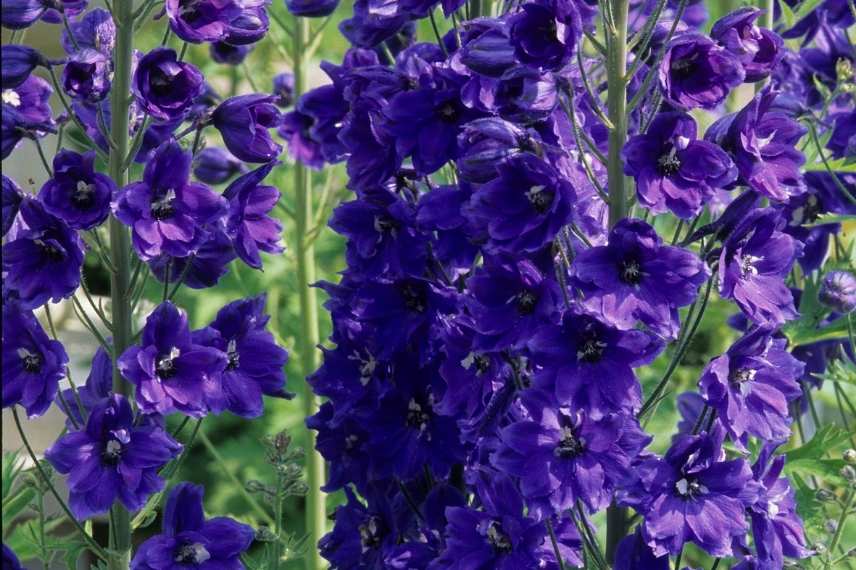
Delphinium
Echinaceas
Echinacea, also known as Purple Coneflower, is an American perennial that boasts a generous flowering display with large heads resembling daisies or, depending on the variety, quirky, fluffy pom-poms. In fact, the numerous varieties of echinacea offer flowers in shades of pink, purple, white, and even orange, yellow, or downright green!
Vegetation resumes around late April to early May (watch out for slugs once again!) for a flowering period throughout the summer, from June until early autumn.
Essential in a natural garden, this perennial should be planted in full sun in fertile, cool, and well-drained soil.
→ Come choose your echinaceas from our online nursery.
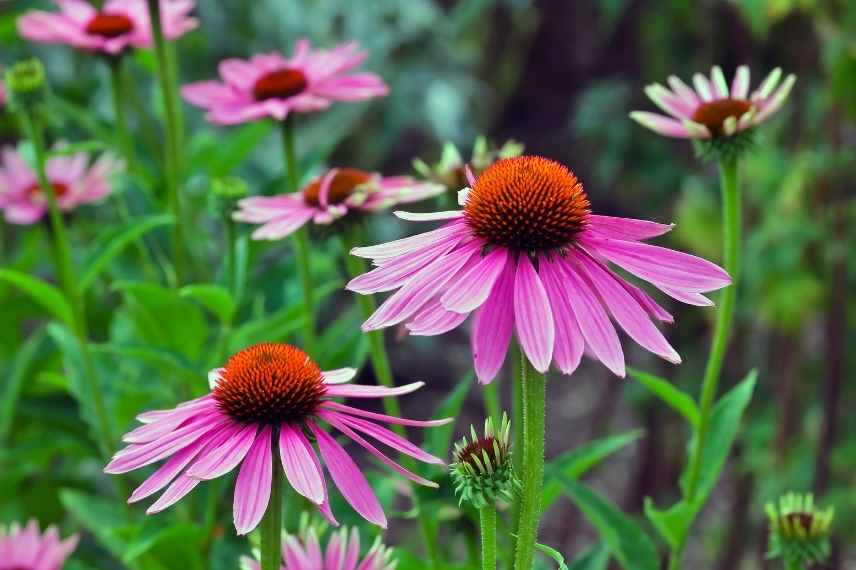
Echinacea purpurea
Agastaches
Perennial with a wild appearance, agastache is a lovely perennial with summer flowering spikes made up of small mauve, violet, pink, orange, red, or even white flowers depending on the varieties. The foliage also has the characteristic of being aromatic and can be used to flavour certain dishes. Highly melliferous, agastache spikes attract numerous pollinating insects.
Enjoying warmth, agastache only resumes its growth quite late, around the end of April or even early May. This perennial loves the sun and flowers all summer, from June to September.
It is a short-lived perennial (no more than 5 years) but that doesn’t matter, as it self-seeds abundantly. Agastache adapts to a wide range of soil as long as it is well-drained. Indeed, it only fears heavy, clayey soils.
→ There are agastaches for all tastes.
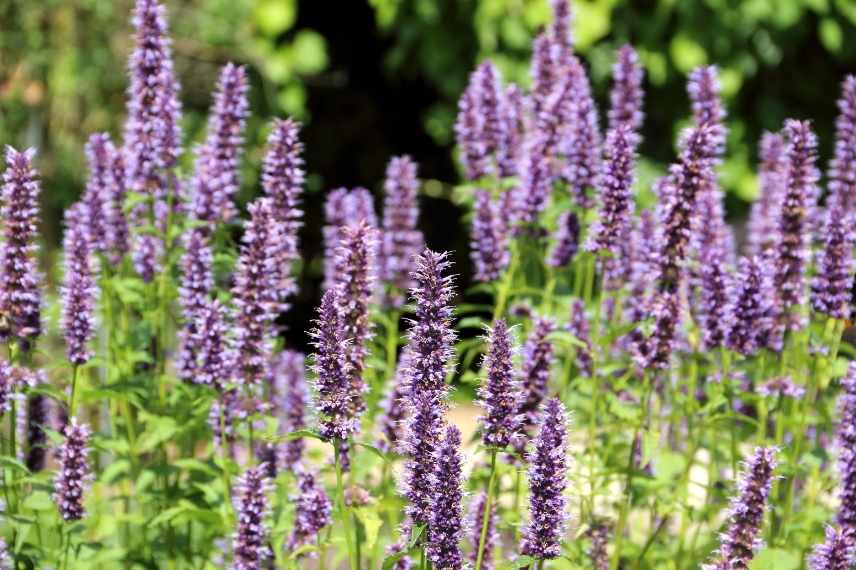
Agastache rugosa
Perovskia
Perovskia, or Russian Sage, or even Afghan Sage, is a bush that is generally considered a perennial in the garden. It is characterised by beautiful silvery foliage and blue flowering, somewhat reminiscent of lavender, with ramified and light spikes. This lovely flowering attracts butterflies, bees, and bumblebees throughout the summer.
The bush-perennial “wakes up” around May to grow rapidly and flower as early as June. The flowering of Perovskia lasts all summer, sometimes even until the first frosts.
Perovskia thrives in full sun, in poor, arid, calcareous, and stony soils, by the seaside as well as in urban gardens. Its rapid growth makes it an ideal plant for new gardens. But its final asset is that Perovskia is also resistant to drought, sea spray, neglect in watering, pollution, and diseases.
→ Discover the most beautiful varieties of Perovskia here.

Perovskia
Bonus: other late-starting perennials
Sticking to the ‘Classics’
- Lythrum salicaria or Common loosestrife: a native perennial that thrives in moist soils. It flowers in summer with large spikes of pink flowers;
- Hedychium or wild ginger: a rhizomatous plant, moderately hardy, that produces magnificent spikes of warm-toned flowers, adding a lovely exotic touch;
- Ceratostigma plumbaginoides or leadwort: this undershrub is considered a groundcover perennial. Its flowering begins in late summer, featuring small flowers of particularly vivid gentian blue.
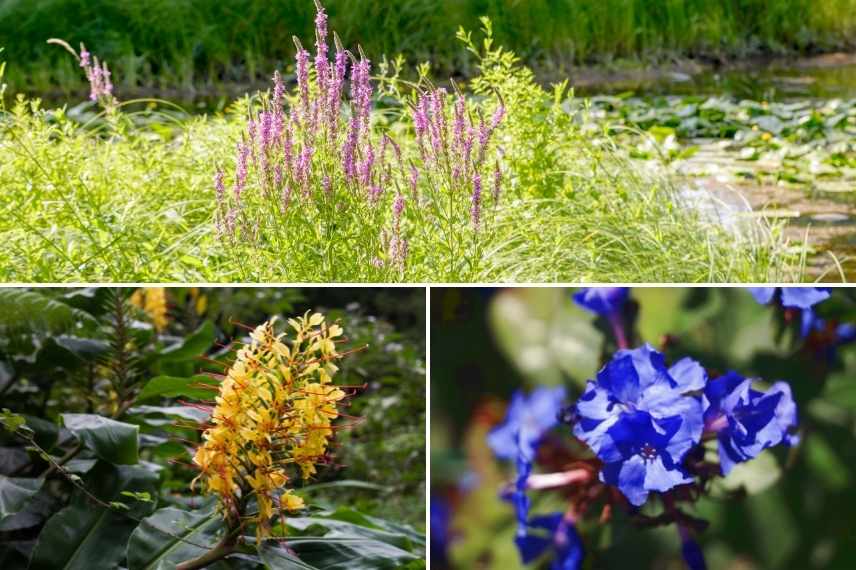
Loosestrife, Hedychium, and Ceratostigma plumbaginoides
Beautiful unknowns
- Asian urticaceae: the genera Pilea (for example: Pilea matsudai ‘Taiwan Silver’) and Boehmeria leading the way (for example: Boehmeria platanifolia). These perennials from the nettle family deserve to be better known and more widely planted in our gardens. Some are absolutely stunning for their graphic quality or the shape and colour of their foliage;
- Colocasia or Elephant ear: a semi-hardy perennial that develops enormous leaves supported by long petioles, remarkably ornamental and heavily imbued with exoticism;
- Coniogramma emeiensis and Woodwardia fimbriata: some “exotic” ferns, though more or less hardy, develop their fronds late in spring. This is the case for these two ferns, both astonishing and little known;
- Begonia grandis: the only truly perennial begonia in our region. It displays large heart-shaped leaves dotted with a multitude of small light pink flowers, blooming continuously from July to October.
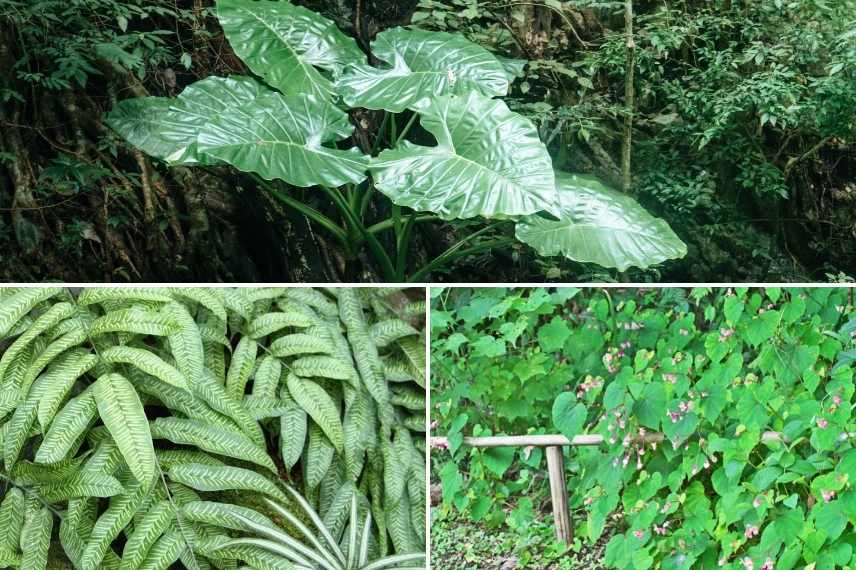
Colocasia esculenta, Coniogramma emeiensis, and Begonia grandis
- Subscribe!
- Contents
































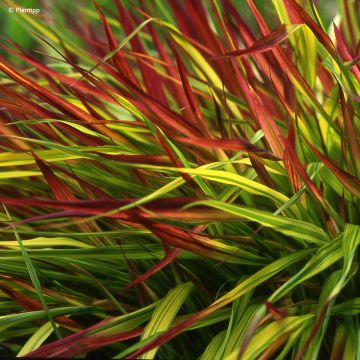

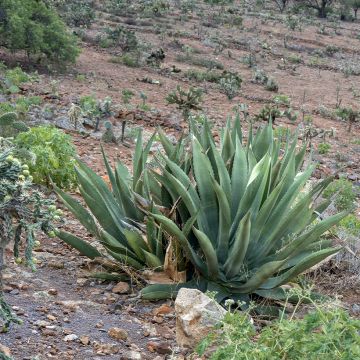


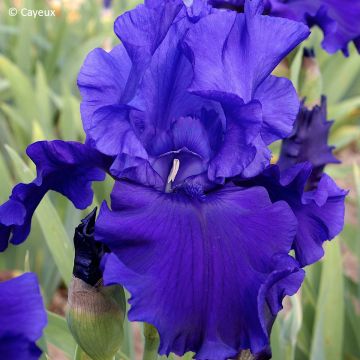

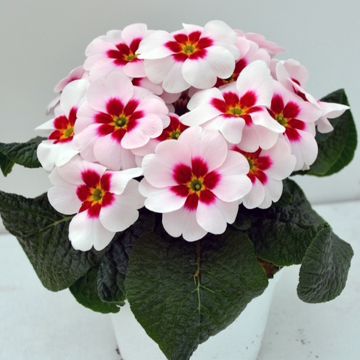

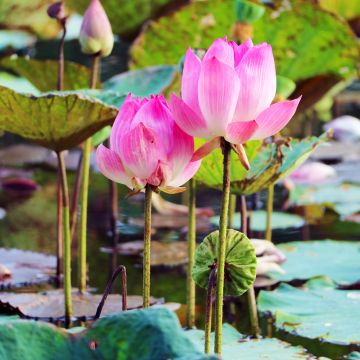
Comments